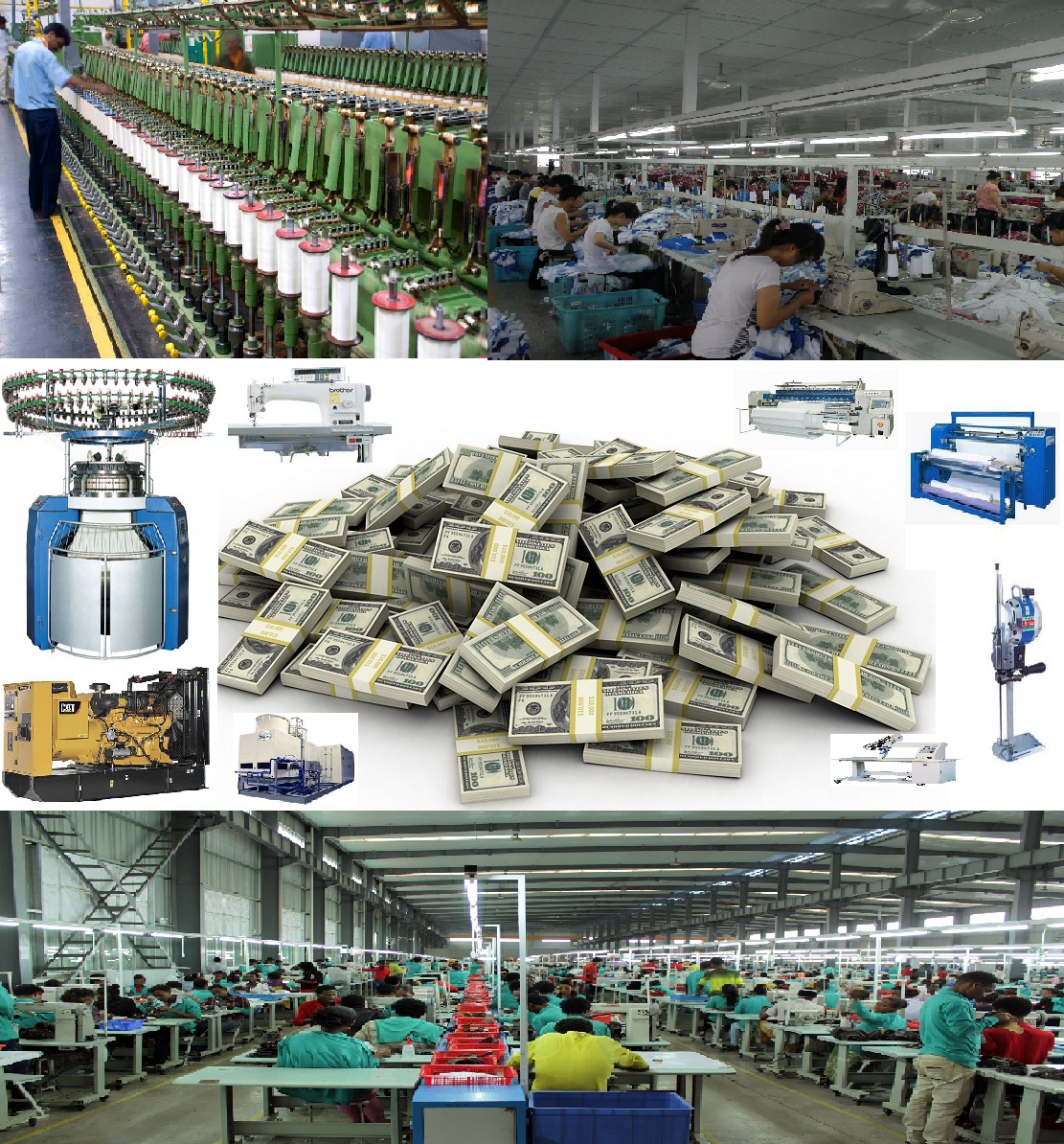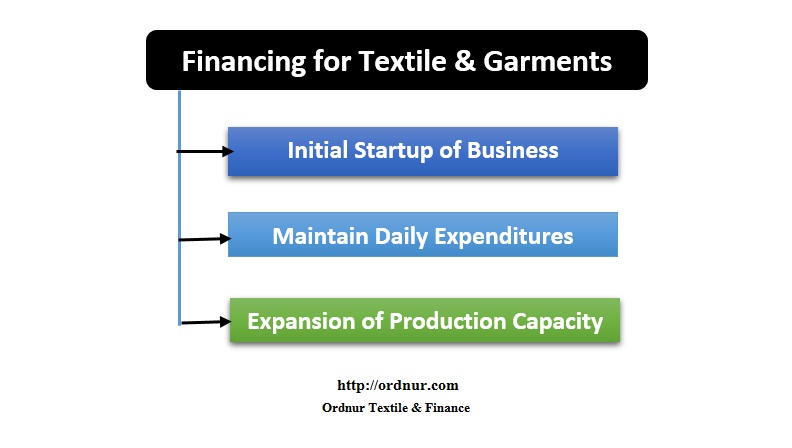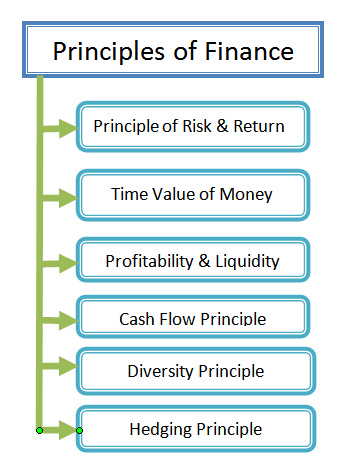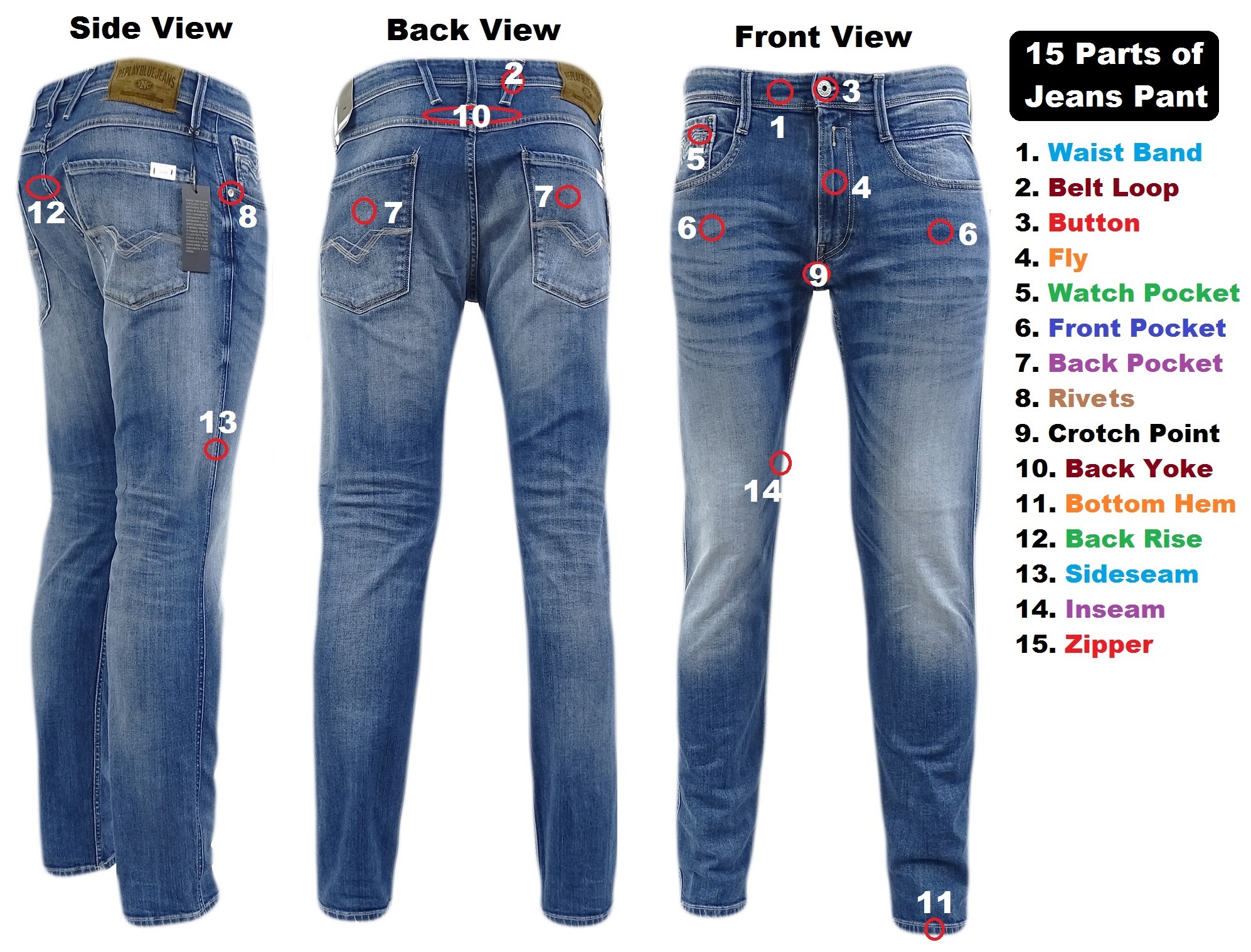Financing for Textile and Garments
A good financing decision works as a driving force for an organization to build a strong financial position. Financing decision varies from industry to industry, organization to organization according to their financing requirement, financial strength, and risk-taking behavior of that particular parties. Here in this article, you will have basic ideas of Financing for Textile and Garments business and how you can make a financial decision.
Basically, the objective of financing is to collect money from the least cost sources and then invest in profitable sectors. Here the challenge is to minimize the cost and maximize the profit of the investment. Financing is required for different stages of business, like an initial startup of the business, or for maintaining the operational expenditures or for expansion of a business. The mechanism of these financing needs varies from business to business.
If you are going to finance for the manufacturing industry then you will be required a large amount of funds for a startup or for expansion of your business, and for operating expenditure you will be required working capital which is much less than the initial investment. On the other hand in the service industry, you have to invest a large amount of capital in the initial year and the operation cost is not that much high.
 Now come to the point of financing for textile and garments industries, as this one is manufacturing industry which requires to buy different types of equipment (power and electricity generator, spinning machine, knitting machine, dyeing machine, printing machine, sewing machine, cutting machine and many more) we have to spend lots of money and our huge amount of capital will be invested for this purpose. In addition to this thousand garments, the worker will be working here, for payment of salary and wages you will be required a larger amount of working capital. On the other hand for importing raw materials you will also be required a huge amount of money.
Now come to the point of financing for textile and garments industries, as this one is manufacturing industry which requires to buy different types of equipment (power and electricity generator, spinning machine, knitting machine, dyeing machine, printing machine, sewing machine, cutting machine and many more) we have to spend lots of money and our huge amount of capital will be invested for this purpose. In addition to this thousand garments, the worker will be working here, for payment of salary and wages you will be required a larger amount of working capital. On the other hand for importing raw materials you will also be required a huge amount of money.
If you want to expand your business to increase production capacity you have to invest a huge amount of money on a long-term basis.
The question is how you can manage this required money and from where you can source this money. At the time of sourcing of money/ fund, you always have to be careful about the cost of that fund, the least costing source will be preferable.
 Financing for Textile and Garments can be for:
Financing for Textile and Garments can be for:
- Initial startup of a business.
- Maintaining daily expenditures.
- Expansion of Business/ Production Capacity.
Initial Expenditure for Starting a Textile and Garments Business
You already know that for starting a new setup for textile and garments you must spend a large amount of capital for purchasing capital machinery. The important thing is how you are going to finance for this, my suggestion is, and as capital machinery and equipment’s for the long-term it will be a better decision of financing from the long-term sources. Available options for financing are:
- Long-term bank loan (Debt Financing).
- Selling share (Equity Financing); in case of a public limited company.
- Or you can choose both debt financing and equity financing (the ratio of debt to equity will depend on the financial strength and the business risk of that company).
From the above alternatives, my personal suggestion is to choose the third one because you cannot usefully debt financing because you have to bear a fixed cost (interest) for a certain interval of time for a period.
- Fixed cost financing may increase your financial risk, so try to avoid full debt financing.
- On the other hand, equity financing is more costly as you have to share all of your profit proportionately according to the contribution of equity capital.
The right choice is to use debt and equity to minimize the weighted average cost of capital. And you have to form your optimal capital structure by considering two major factors (business risk & financial strength). Taking a loan for a new business is not that easy, that’s why initially we have to depend upon our own capital first. With the passes of time, for a successful business, it will be better to increase the debt percent so that taxable income can be reduced.
Financing for Maintaining Daily Expenditures
Actually maintaining daily expenditures means, managing working capital funds for your business operations or management of current assets and current liabilities. You may source your working capital either from long term or short term sources and the decision will depend on the working capital management policy (hedging, conservative, aggressive) of yours. Before choosing working capital management policy you have to have a brief idea of these policies:
- Hedging Policy of Working Capital Management: Hedging policy is one of the popular policies of managing funds where a matching principle is used. Financing for a current obligation is done from the current assets (current sources) and on the other hand financing for a long-term obligation is done for the long-term assets (long-term sources). That means for a short-term requirement of funds you need to collect from short-term sources and for long-term requirements you have to collect from long-term sources.
- Conservative Policy of Working Capital Management: In the case of conservative policy company has the intention of taking a low risk for financing the current asset. Additional fund required for fixed assets company keeps the extra fund for using as a current asset. Here company financing (collecting) more funds from the long-term sources for both the current asset and fixed/long-term assets. The main intention is to lower the risk of financing for current assets.
- Aggressive Policy of Working Capital Management: the Aggressive policy of working capital management is a risky policy in the sense that most of the required funds for current and long-term assets are to be financed from the short term sources, a lower amount of funds will be collected from the long-term sources. Basically, the money will be kept less than the required amount for working capital that why risk is higher.
Before taking a policy form all these above-mentioned policies you must evaluate your ability to liquid your asset and liquid (cash) required for your business. Another thing is your risk-taking behavior towards working capital management.
The question is from which sources you can finance for maintaining daily expenditures? The probable source available for the textile and garments are:
- Lowering the collection period of accounts receivables.
- Delaying the payment of accounts payable.
- Delaying the payment of salaries and wages.
- Taking a short-term bank loan.
- Purchasing raw materials on credit.
Financing for Expansion of Textile and Garments Business
As you already know that for the business of textile and garments you will be required a lot of money. Expansion of business or expansion of production capacity requires a larger investment for purchase machinery and equipment, land, construct a building, etc. This is more or less similar to the initial investment for your business. In addition to acquiring capital assets, you have to hire workers and employees for supporting your business expansion. The thing is you have to pay wages and salaries, purchase of additional raw materials, or any other operating expenditures. So you can manage this extra money from both long-term sources and from short-term sources. Whether you choose long term or short term sources, is mainly depends on your financial strength and adequacy of money for your existing business. Normally a profitable textile and garments company has the intention to expand when they find that the business is profitable and they can manage their extra required fund from their own profit.
Financing for Textile and Garments
After these discussions, I think that it is clear how you can finance your textile and garments and which sources are available for financing. Careful analysis is to be done before any larger investment because large investment risk is higher and involves cost also.
If you have any confusion then you can comment here. I will try to give you a suggestion about financing and different problematic situations.
Written by:
Md. Nahian Mahmud Shaikat
Financial Analyst
Email: [email protected]




Very good. I need to follow…
thank you for your feedback.
Yes, I totally agree with what you said. I also think that a good financing decision works as a driving force for an organization to build a strong financial position. This article is very helpful.
My brother has Textile and Garments business. I think that this article will definitely help him finance it. Thanks for sharing this article. This is a very helpful article.
My father has a Textile and Garments business. I think that this article will give him more ideas about how to finance it well. Thanks for sharing this article.
This is a totally a big help for me. This will surely help me to have an idea on how I can finance my garment business. I’ll definitely consider what you said here.
My brother has a textile and garment business. This article is very helpful. I think that he’ll find this very useful. I’ll share this to him.
This is a very helpful site. I think that this will surely help me to finance my Textile and Garments business. Thanks for sharing this article.